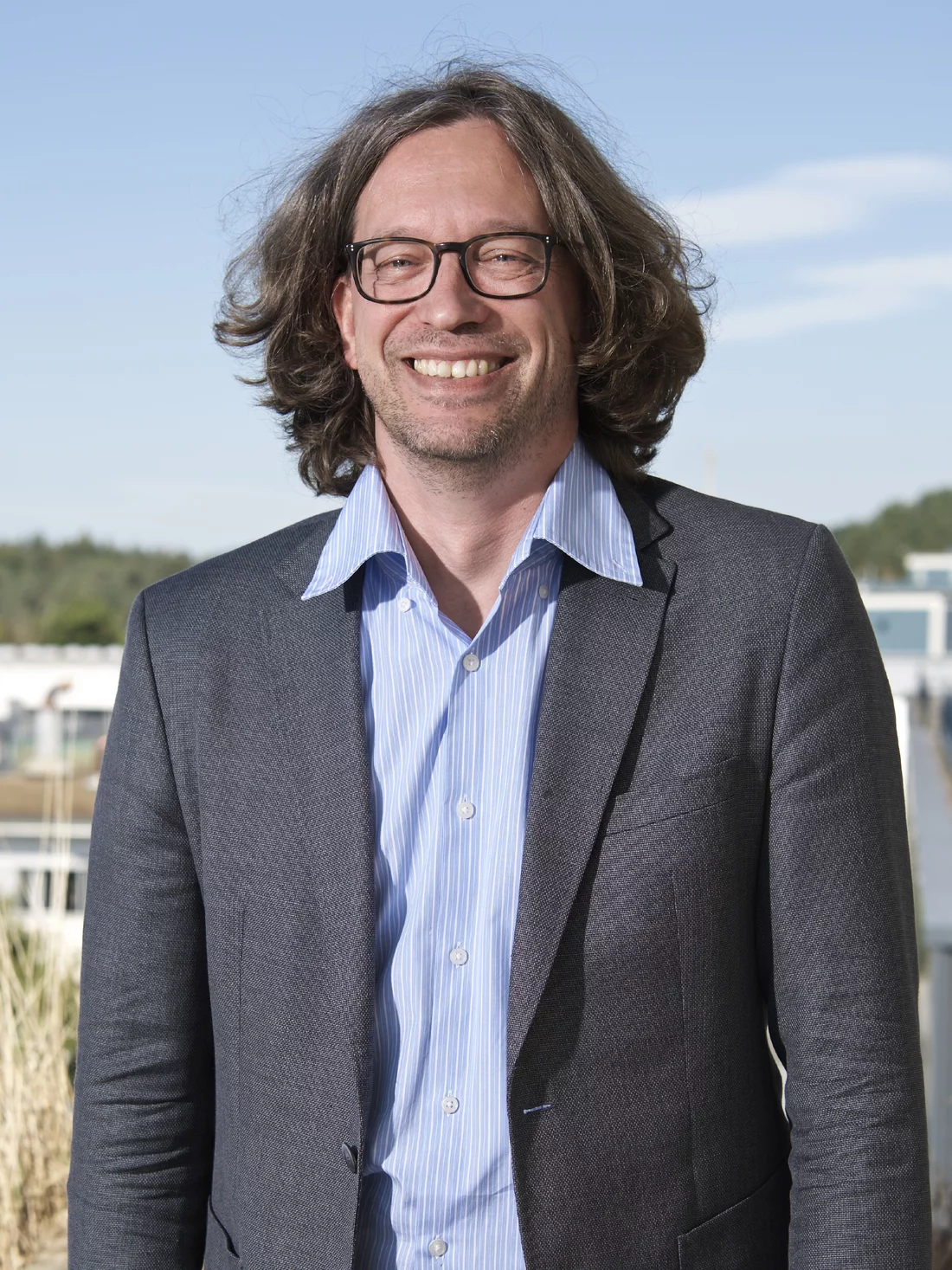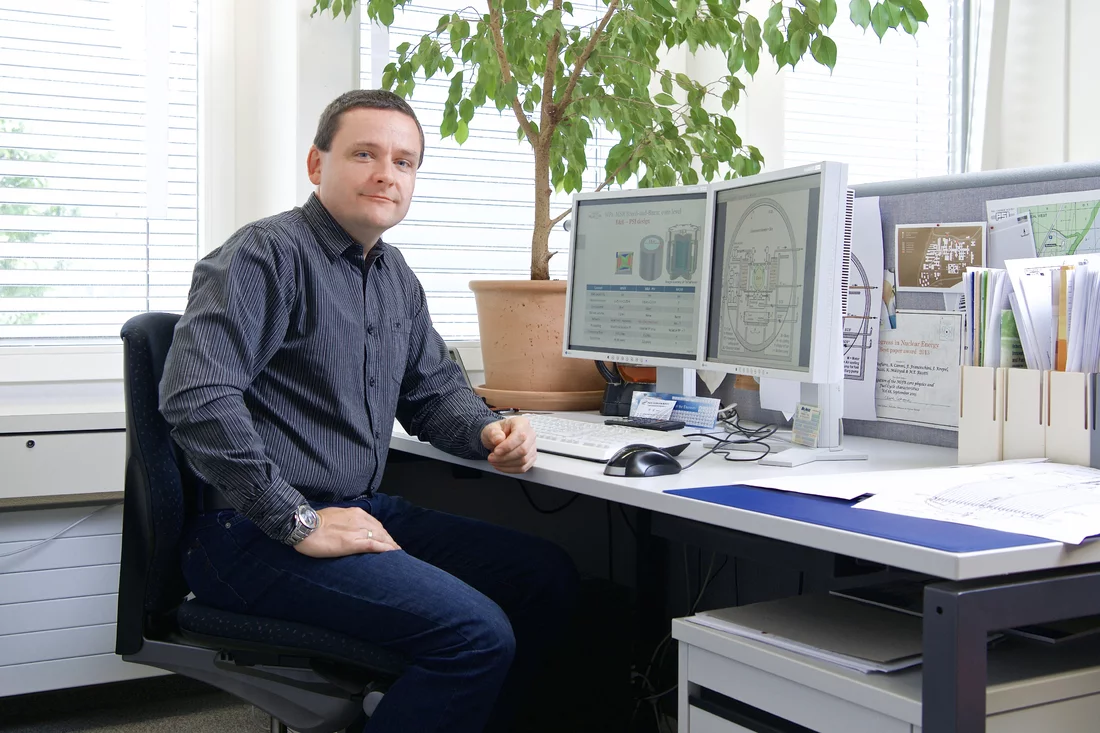The Paul Scherrer Institute PSI was formed in 1988, in part from the Swiss Federal Institute for Reactor Research. Today the topic of nuclear energy and safety is one of many at PSI. Within this range of topics, a small group of scientists is using theoretical models to explore an alternative for future nuclear reactors: so-called molten salt reactors. This helps to secure Switzerland’s expertise regarding globally relevant questions in the area of nuclear energy and reactor safety, for today and tomorrow.
Vending machines often carry a simple sign aimed at would-be thieves: Crime doesn’t pay; the cash box is emptied every evening.
And even if this deterrent doesn’t work, the owner should be able to bear the loss. This basic idea can be transferred to a completely different domain — the safety of a class of possible next-generation nuclear power plants.
Here the researchers’ idea is to keep the danger as small as possible, even in the event of an accident, by removing volatile radioactive substances from the reactor on a daily basis. Or,
says Jiri Krepel, adding specificity to the vision, even hourly.
Krepel is one of eight researchers in the Fast Reactors Group at the Paul Scherrer Institute PSI. He and his colleagues are concerned with both the promise and the problems of possible future nuclear reactors.
Reactor research at PSI: yesterday and today
PSI was established in 1988 through the merger of the Swiss Institute for Nuclear Physics and the Federal Institute for Reactor Research. Thus nuclear energy research is one of the two main roots of the present-day institute. Since its inception, PSI has advanced further and broadened its scope. Today it is an institute for natural and engineering sciences with research focused on three areas: Matter and Materials, Energy and Environment, and Health. Research on reactors continues to have its place, but within an increasingly multifaceted array of fields.
Reactor research at PSI is important for several reasons: We make an important contribution to the safety of Switzerland’s existing nuclear power plants, addressing questions of radiation protection and research on permanent storage of nuclear waste. Through this future-oriented research, we stay on the ball in terms of new developments and advances in the area of nuclear energy. And in the coming years, it is only with such expertise that Switzerland will continue to be represented properly and on par with other nations on international panels concerning the global future of the energy supply,
explains Andreas Pautz, head of the research division Nuclear Energy and Safety at PSI.
This applies also and especially in times when nuclear power is viewed critically by the general public. Switzerland and several other states have responded to their concerns: Nuclear power should in the long term give way to other forms of energy. However, other countries — among them many European nations — are holding onto nuclear energy as a source of electric power; new nuclear plants are currently being built in North America and Asia. In addition, heavily funded international research experiments are under way to make nuclear fusion, too, useful for energy production. And finally, the day will come when all of the nuclear power plants currently operating are decommissioned and dismantled. Experts are needed for all of these areas. Here Switzerland must have a place at the table and must have a role in shaping future actions.
Therefore Switzerland is also a member of the Generation IV International Forum (GIF) — an international association for research and development towards future nuclear power plants of the so-called Fourth Generation. Nuclear power plants of Generation IV are distinguished by the high demands they must meet for safety, sustainability, and cost-effectiveness. Fourteen nations and communities are members in GIF. Switzerland has been one of them since 2002 and is represented in GIF by PSI.
Hot topic: molten salt
So-called molten salt reactors (MSRs) represent one possible concept for nuclear power plants of Generation IV. They are Jiri Krepel’s special area of expertise. Using theoretical computational models, he takes part in international collaborations to study molten salt reactors. MSRs would have three advantages,
Krepel explains. First, the higher level of safety
— including the already mentioned possibility of keeping the environmental danger to a minimum, since volatile radioactive materials are continuously removed and piped into a storage tank. In addition, MSRs can be designed to be inherently safe: In the event of an accident, the molten salt can be drained by gravity into a cooled storage tank below the power plant, so that on the one hand the reactor can be shut down, and on the other hand the fuel will still be cooled in a secure container,
Krepel says. The emptying can even be triggered by a passive valve, through the melting of a solid salt plug. Developing the details of the required cooling is a job for engineers, but in any case it can be designed in such a way as to function on its own — one option is cooling with air that circulates naturally, thus removing the heat.
Second, MSRs can be operated with a variety of different fuels. For this, the enriched uranium used today is not the only conceivable choice; natural uranium or the element thorium, which is roughly three times more prevalent in the ground than uranium, can be used in MSRs. With that,
according to Krepel, we would have fuel reserves for several millennia.
The third advantage: MSRs can be operated as a kind of recycling plant for radioactive fuel materials. Up to 95 percent of the spent fuel from present-day reactors could be used in MSRs,
Krepel says. For one thing, this increases the efficiency — that is, the amount of energy that can be obtained from the same amount of starting material. Also, with recycling, there would be basically nothing left over except radioactive waste with a relatively short half-life, requiring minimal cost and effort for safe storage.
Specialists of the future
Yet Krepel and his colleagues also realise that MSRs, even if they should one day be built, still lie far in the future. Before a commercial MSR can go into service anywhere in the world, scientists and engineers have another 20 to 30 years of research and development ahead of them,
estimates lab director Pautz. But the topic of MSRs is so exciting that we can use it to generate enthusiasm among young researchers and attract them to PSI,
Pautz continues. And Switzerland needs this young talent in order to have national experts and specialists in the area of nuclear energy at its service for transnational problem solving, not just today but also in the future.
The term molten salt reactors
(MSRs) refers to a family of nuclear reactors. One concept that they have in common is that the fuel is distributed evenly within a high-temperature liquid salt mixture.
The reactor concept contemplated with MSRs not only differs completely from existing solid-fuel nuclear reactors with regard to aspects of operational safety, but it also generates a different kind of nuclear waste. The idea is not new, though. It was the subject of intensive research in the USA, China, and Japan until around the mid-1970s. From that point on, the United States made no federal funding available for the development of MSRs but rather focused on other reactor types.
In MSR research and development, there still are several challenges to be overcome. One problem, for example, arises from the choice of materials for the reactor vessel containing the molten salt: Because the molten salt is strongly corrosive, vessels and pipes must be made from very resistant materials. Furthermore, the nickel-iron alloys under consideration for use in MSRs become brittle under exposure to free neutrons. Operating at extremely high temperatures also poses special challenges for the materials to be used.
In addition, the chemical separation of fission products from the molten salt has so far only been achieved on the scale of laboratory experiments; a technical implementation on the large scale that would be necessary for application in MSRs is still lacking. And in the end, for fundamentally new MSRs, a completely new catalogue of safety requirements would also be needed.
Contact
Prof. Dr. Andreas Pautz
Head of Nuclear Energy and Safety Research
Paul Scherrer Institute PSI
+41 56 310 34 97
andreas.pautz@psi.ch


